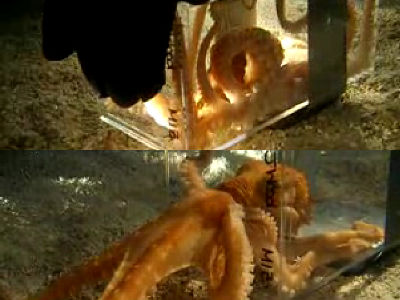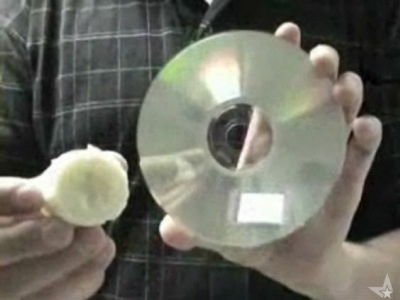A fish-type robot that keeps swimming while repairing itself even if it is destroyed is developed

Many technologies have been developed to help robots self-heal, such as
Swimmers Heal on the Move Following Catastrophic Damage | Nano Letters
https://pubs.acs.org/doi/full/10.1021/acs.nanolett.0c05061
You can see what a fish-type robot looks like by self-repairing and continuing to swim even if it is disconnected by watching the following movie.
Small robot swimmers that heal themselves from damage --Headline Science --YouTube
The research team aims to develop a robot that continues to operate while self-repairing even in places where it is difficult for humans to enter.

As a first step towards achieving this goal, the research team has developed a self-healing fish-type robot. This fish-type robot with a total length of 2 cm is composed of three layers, a 'magnet layer', a 'hydrophobic and rigid layer', and a 'conductive layer', and the tail part contains platinum. It is.

Platinum contained in the tail undergoes a reduction reaction when it comes in contact with hydrogen peroxide. Fish-type robots use this reaction to swim on the surface of the water.

Fish-type robots can self-repair using magnetic force even if they are cut. For example, if the tail is cut off, the body will not be able to move ...

Only the tail continued to swim and was attached to the torso by magnetic force.

The fish-type robot, whose propulsive tail has returned to its original position, can now swim again.

Self-repair is possible even if the disconnection location is different. For example, even if it is cut in the middle of the torso ...
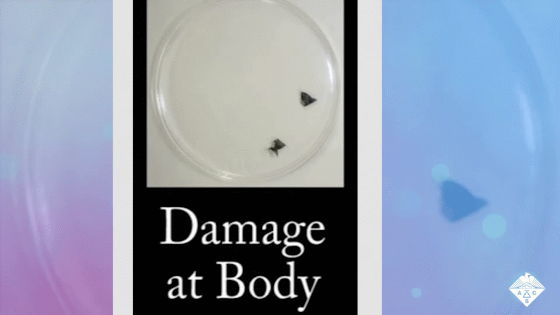
The side with the tail continues to swim and is restored by magnetic force.

Self-repair is possible even if it is cut into three parts: head, torso, and tail.
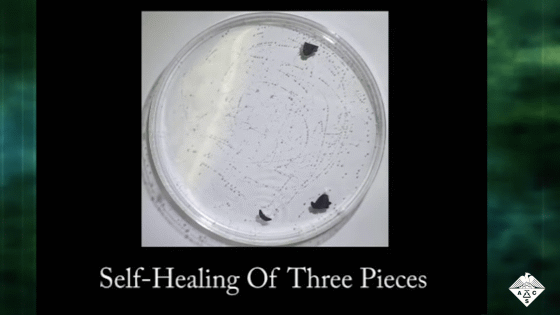
First of all, the tail and torso stick together ...

Next, it stuck to my head and I was able to return to its original state without any problems.
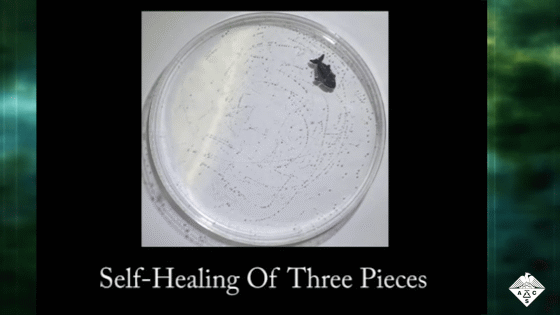
The fish-type robot developed this time operates only in a limited environment such as a laboratory. However, the research team said, 'The self-healing technology developed this time may one day be applied to robots that perform dangerous tasks for humans such as industrial waste treatment.'
Related Posts:





